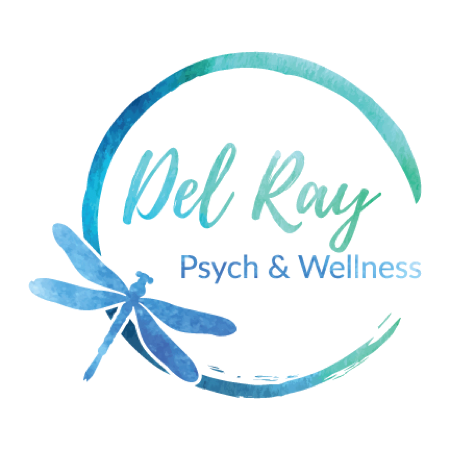Relationships That Last: What Attachment Teaches Us About Staying Connected
Ever find yourself stuck in the same fight, walking away thinking, Why does this keep happening? Why do we keep hurting each other when all we want is to feel close?
You're not alone. You're human. And there’s a reason that same fight keeps happening.
In my couples counseling work, I often notice that it’s rarely about the surface stuff—like the dishes, who texted back late, or differing parenting styles (though those things matter). More often, it’s about connection—and what happens when we lose it. So what is the real reason you keep fighting?
Beneath the sighs, silences, and sarcasm, there’s often a softer story:
Do you still have my back?
Am I still important to you?
Do you still love me?
We all want to feel safe, seen, and loved. When we don’t feel it, we react—either by getting louder or shutting down. That’s where attachment comes in—not just as a theory, but as the invisible force that shapes every love story.
What is Attachment Theory?
Originally developed by psychologist John Bowlby, attachment theory explains how the emotional bonds we form early in life shape how we connect (or protect ourselves) in adult relationships. Let’s break down the four main attachment styles, and how each one shows up when love gets real.
Secure Attachment
You feel comfortable being close to others, but also okay spending time apart. You trust your partner’s love and can talk about feelings without fear.
Example: In a disagreement, you stay calm, express your needs, and trust you can work through it together.
Anxious Attachment
You deeply value connection but often worry your partner doesn’t love you as much as you love them. You might need frequent reassurance or fear being left behind.
Example: If your partner seems distant, you might text repeatedly, overthink, or feel panicked until you reconnect.
Avoidant Attachment
You prioritize independence and feel overwhelmed when others get too close. Strong emotional needs from others can feel suffocating, so you may pull away.
Example: In conflict, you might shut down emotionally, insist on space, or feel irritated by your partner’s requests for closeness.
Fearful-Avoidant (Disorganized) Attachment
You crave love but fear it at the same time. You may reach for your partner and then push them away, torn between wanting connection and protecting yourself from being hurt.
Example: After an argument, you might desperately want comfort, but also withdraw because you don’t fully trust your partner.
How Do We Stay Close?
Even if you didn’t grow up with perfect models of safe, steady love, you can build secure attachment skills and begin to reconnect as a couple. Some of the wisest voices in couples therapy— Sue Johnson, Terry Real, and John & Julie Gottman—have spent their careers exploring this question. What they’ve found is surprisingly simple, but not always easy.
Emotional Safety
Dr. Sue Johnson says that at the core of most fights is a fear of disconnection. When we feel ignored, misunderstood, or dismissed, our brains go into alarm mode.
We might say:
“You never listen.”
“You’re always on your phone.”
“I don’t feel like you have my back.”
But what we’re often really saying is: “I miss you. I need you. Are we okay?”
In therapy, couples often experience a moment when one says something raw and real—like, “I hate fighting with you because I love you so much”— and everything softens. This is what Sue Johnson calls a “bonding moment.” It’s not magic. It’s vulnerability plus safety.
Try this: Next time you’re feeling distant, skip the blame. Start with, “I miss feeling close to you. Can we talk?”
Courage and Repair
Terry Real, a well-known couples therapist, reminds us that intimacy isn’t just about feelings—it’s about skills. He believes the biggest barrier to connection is often our own ego. We all get triggered and say things we regret. The key? Learning how to repair. Terry says: “You can be right or you can be in a relationship.”
Real love isn’t about avoiding conflict—it’s about repairing well. That means knowing how to say, “I’m sorry I hurt you. I want to do better,” and meaning it.
Try this: Ask yourself, “What’s my go-to move when I feel threatened—do I get critical, shut down, or get cold?” Then ask: “What might my partner need from me instead?”
It’s About The Small Moments
Drs. John & Julie Gottman have spent decades studying what makes relationships thrive. Their biggest finding? The healthiest couples aren’t perfect—they just keep showing up in small, consistent ways. They call these “bids for connection.” It could be anything:
A funny meme you send
A tired sigh you hope your partner will notice
A “How was your day?” that really means “I want to feel close to you.”
Turning toward these bids, over and over, builds trust. It’s not about grand gestures; it’s about small moments adding up.
Try this: Next time your partner makes a bid—however tiny—pause and lean in. Ask yourself, “Can I turn toward this moment instead of away?”
What Does This Mean?
Maintaining a close and trusting connection isn’t something that happens by chance—it requires intention and practice. Building a secure attachment takes deliberate action, including:
Reaching for each other, even when it feels scary
Creating space when tensions rise, rather than escalating
Trusting each other’s love and intentions, even in tough moments
Owning our stuff without blaming or shutting down
Repairing—again and again, with honesty and care
When we start naming our feelings, leaning toward each other instead of pulling away, and offering grace in the process, that’s when the real shift happens.



